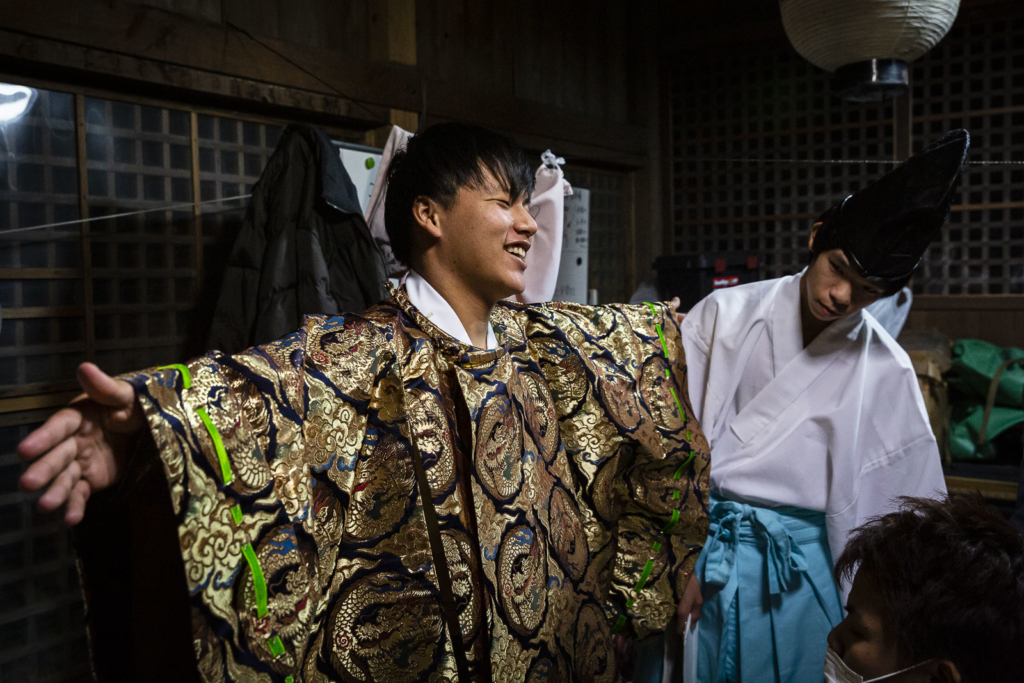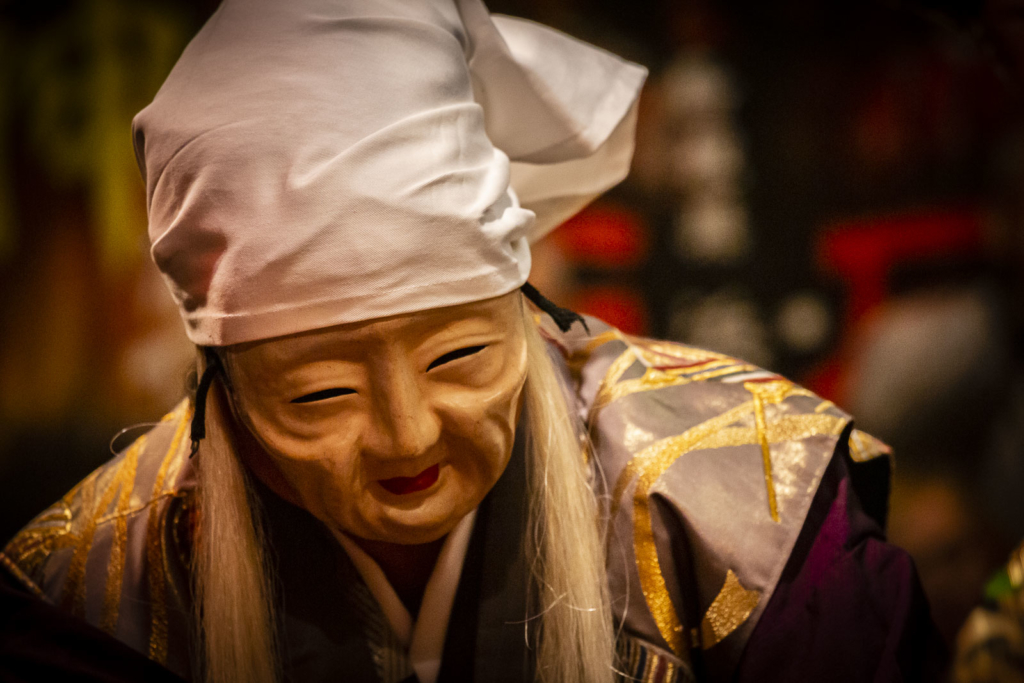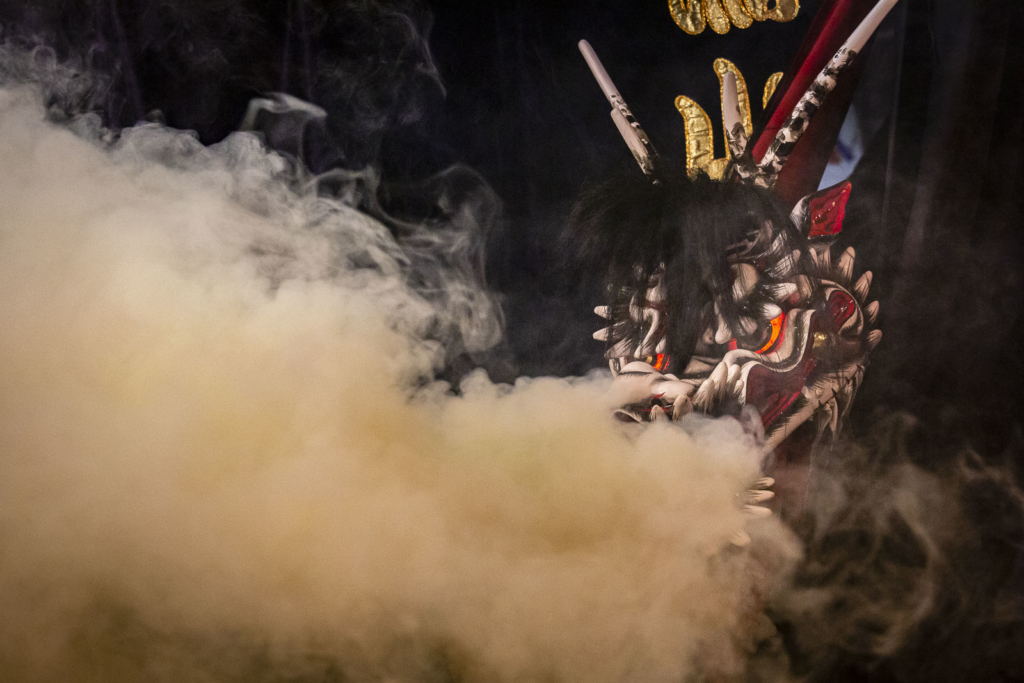Night was already setting when I arrived at the Sanku shrine, near the city of Hamada, in western Japan. The people who were leaving their shoes at the entrance of a small wooden building, sat in the floor in front of an empty stage, as they entered. I was invited by the organization to go backstage where several men and boys were dressing in elaborate costumes and putting on their masks. When everything was ready, I took my place on the floor in front of the stage. Several people, dressed in the tradicional white and light blue garments, sat in front of musical instruments and began playing. The Kagura was about to begin.




A long, long time ago there was a goddess named Amaterasu. One day, because of conflicts with other gods, she hid on a cave. As she was the sun-goddess, the moment she hid, the world was plunged into darkness. It took a party organized by other gods, and a dance by the goddess Ame-no-Uzume in front of the cave entrance, for curious Amaterasu to leave the cave to see what was going on. And so the world was lit again.




This was probably the first Kagura, a word that literals means “god entertainment”. Since those long gone times the descendants of goddess Ame-no-Uzume continue to perform these dances. This tradition has passed on to Miko, the young priestesses of Japan’s Shinto shrines, who today still perform different dances in certain days of the year, in shrines scattered though all the country.



Gradually this tradition also began to be passed on to other performers. What began as a religious ceremony gained a popular context. In several areas of Japan troupes were formed with the purpose of continuing this tradition of dancing to the Gods. Those troupes were joined by people of every layer of society. Hamada, in the Iwami area of Shimane prefecture, became one of these places.


In Hamada, Kagura is in people’s DNA. Small children immediately become alert as they listen to the sound of the flute and drums. Some even try a few dance steps. It’s in their blood.







Here Kagura has turned into a mix of dance and theatre, where the dancers perform plays based in the Kojiki, a written compilation of japanese myths associated to Shinto religion. Ebisu, the smiling god of good fortune walks through the public throwing candy. The warrior Susanoo wields his sword to kill the monster Yamata-no-Orochi, who is keeping a princess captive. The shows take place almost daily, particularly in seasons like Autumn, when it is necessary to give thanks to the Gods for good crops.



In some places of Japan Kagura still has a reverential and austere significance. Yet, in Hamada, it has long become a celebration for the people. According to one inhabitant, “if the gods liked to be entertained, they probably loved to laugh and enjoy themselves as well”.

